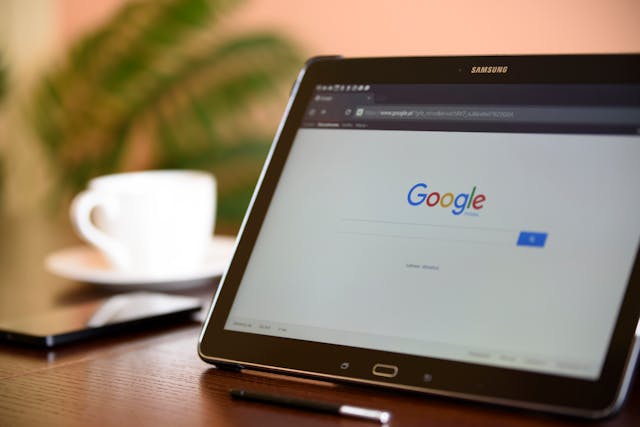High CPMs (cost per thousand impressions) on Google Ads can be a frustrating hurdle. Advertisers often pour time and resources into their campaigns, only to watch their costs climb while their results fail to justify the expense. Figuring out why CPMs are high and finding ways to bring them down starts with understanding what factors influence ad costs.
Google Ads uses an auction system where advertisers compete for visibility, and CPM is heavily influenced by competition, targeting choices, and ad quality. Tackling these elements strategically allows advertisers to lower their costs while still reaching the right audience.
How Targeting Impacts CPM
Specific targeting settings can significantly raise CPMs, particularly when you’re aiming for a highly competitive audience. Tight geographic constraints, niche interests, or layers of audience segmentation all narrow the pool of impressions, which drives up costs. While these settings can help deliver more relevant impressions, they may also lead to inefficiencies if they’re too restrictive.

A client in the financial services sector once complained about their high CPMs. They were using a long list of interest-based audience segments layered with demographic filters, making their targeting extremely narrow. This approach limited the available inventory and inflated CPMs. Simplifying their targeting while maintaining relevance helped bring costs down without sacrificing quality.
Quality Score and Its Role in Ad Costs
Ad Quality Score is one of the biggest determinants of CPM on Google Ads. This metric measures the relevance of your ad copy, landing page experience, and expected click-through rate (CTR). A low Quality Score means you’re paying more for the same impressions as a competitor with a higher score.
For an e-commerce campaign I managed, we noticed that one ad group consistently had higher CPMs than others. After digging into the issue, it became clear that the ad copy was poorly aligned with the keywords we were bidding on. Tweaking the messaging to match user intent boosted the CTR and improved the Quality Score, leading to a noticeable drop in CPM.
Google rewards advertisers who provide a positive experience for users. Ads that are highly relevant and lead to valuable landing pages will naturally cost less per impression because they align with Google’s goal of delivering the best results.
Competition and Auction Dynamics
Competitive industries almost always see higher CPMs. In crowded verticals like tech, finance, or luxury retail, the auction dynamics make it expensive to secure valuable impressions. Advertisers with deep pockets drive up bid prices, leaving smaller businesses struggling to keep up.
A small SaaS startup I worked with experienced this problem when targeting keywords dominated by enterprise-level companies. Their CPMs were sky-high, and their ads struggled to break through. Shifting to longer-tail keywords and focusing on niche queries allowed them to escape the hyper-competitive space and bring CPMs down.
How Ad Placements Affect CPM
The type of placement you choose on Google Ads also influences your CPM. High-visibility placements, such as YouTube mastheads or display ads on premium websites, naturally cost more. While these spots deliver better brand recognition, they may not always provide the best return on investment.
One client in the travel industry insisted on running YouTube ads exclusively in pre-roll slots on high-profile channels. While the exposure was valuable, their CPMs were more than double what we’d seen on other placements. Testing mid-roll placements and less competitive channels significantly reduced costs without sacrificing reach.
Testing Different Ad Formats
The format of your ads can also impact CPM. Video ads, for example, often cost more per impression than static display ads because they tend to engage users for longer. While video ads can deliver better engagement metrics, the higher CPM means advertisers need to be strategic about when and where they use this format.
A retail brand I worked with saw their CPMs rise sharply after shifting to video-based ads for all campaigns. Instead of scrapping video entirely, we limited its use to remarketing campaigns targeting warm audiences. This allowed us to get the most value out of the higher-cost format while relying on static display ads for top-of-funnel efforts.
Leveraging Frequency Caps to Manage Costs
Frequency caps control how often your ads are shown to the same user. Without a frequency cap, an ad may be shown multiple times to users who have no intention of converting, driving up costs unnecessarily. Setting a reasonable limit on impressions per user helps avoid waste and reduces overall CPMs.
One campaign I ran for a local restaurant chain had no frequency cap in place. Users were being shown the same ad five to six times within a day, which drove up costs without delivering meaningful results. Setting a cap of two impressions per day per user cut CPMs significantly and improved overall engagement metrics.
Ad Creative and Its Influence on Costs
Poor ad creative often leads to lower engagement rates, which in turn drives up CPMs. Google’s system favors ads that generate clicks and interactions, rewarding them with lower costs. Ads that fail to grab attention or connect with the audience will cost more to display.
For a fashion client, refreshing outdated creative with more visually striking designs led to a 15% boost in CTR and brought CPMs down across the board. Consistently testing and updating ad creative keeps campaigns competitive and costs in check.
Retargeting Audiences for Lower CPMs
Retargeting audiences often results in lower CPMs because these users are already familiar with your brand. Retargeting campaigns typically deliver better engagement metrics, which Google rewards with reduced costs.
A home improvement brand I worked with saw this firsthand. Their CPMs for cold audience display campaigns were much higher than their retargeting campaigns aimed at users who had visited their website in the past 30 days. Expanding their retargeting efforts allowed them to achieve better results at a lower cost.
Reviewing Bid Strategies
The bid strategy you use in your campaigns plays a significant role in determining CPMs. Automated bidding strategies, like target CPA or maximize conversions, can sometimes lead to inflated costs if they’re not aligned with campaign goals. Reviewing and adjusting your bidding approach can help control CPMs.
Switching from an automated bid strategy to manual CPC for a campaign targeting high-intent keywords helped one client reduce their CPM while maintaining strong performance. Taking control of bids allowed for better adjustments based on performance data.
Making Data-Driven Adjustments
Regular monitoring and adjustment of campaigns are essential to keeping CPMs under control. Reviewing performance data helps identify what’s working and what’s driving costs unnecessarily. Small tweaks in targeting, ad creative, or bidding strategies often lead to noticeable improvements.

A real estate client ran a display campaign that showed steadily rising CPMs over a three-month period. Analysis revealed that several placements were delivering low engagement but consuming a significant portion of the budget. Excluding those placements brought CPMs down and redirected spend toward higher-performing inventory.
Focusing on Value Instead of Just Costs
While reducing CPMs is an important goal, the bigger picture matters just as much. A lower CPM doesn’t mean much if the impressions don’t lead to meaningful results. Balancing cost-efficiency with audience relevance ensures campaigns remain both effective and affordable.
Tracking conversions alongside CPM gives a clearer picture of campaign success. Measuring metrics like cost-per-click and return on ad spend helps ensure you’re optimizing for value, not just reducing expenses. Ultimately, the goal isn’t just cheaper ads—it’s smarter, more impactful campaigns.